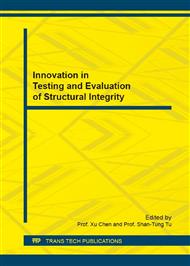[1]
A. Ermete, the stability of molten carbonate fuel electrodes: A review of recent improvement , Applied Energy . 88(2011)4274-4293.
DOI: 10.1016/j.apenergy.2011.07.009
Google Scholar
[2]
I. Parezanovic, E. Strauch, Spiegel .M. Development of spinel forming alloys with improved electronic conductivity MCFC applications, Joural of Power Sources . 135(2004)52-61.
DOI: 10.1016/j.jpowsour.2004.04.007
Google Scholar
[3]
J.M. Andǘjar, F. Segura, Fuel cells: history and updating, a walk along two centuries, Renewable and Sustainable Energy Review . 130(2009)2309-2322.
DOI: 10.1016/j.rser.2009.03.015
Google Scholar
[4]
C.L. Zeng, P.Y. Guo, W.T. Wu, Electrochemical impedance spectra for the corrosion of two-phase Cu-15Al alloy in eutectic at(Li, K)2CO3, 650℃in air. Electrcochimica Acta. 49(2004) 1445-1460.
DOI: 10.1016/j.electacta.2003.10.031
Google Scholar
[5]
Y.S. Kim, H.S. Chun, Sintering characteristics of a porous Ni/Ni3AI anode for molten carbonate fuel cells, Journal of Power Sources. 84(1999)80-86.
DOI: 10.1016/s0378-7753(99)00306-7
Google Scholar
[6]
Y.S. Kirn, K.Y. Lee, H.S. Chun, Creep characteristics of porous Ni/Ni3AI anodes for molten carbonate fuel cells, Journal of Power Sources. 99(2001)26-33.
DOI: 10.1016/s0378-7753(00)00689-3
Google Scholar
[7]
L. James A.J. Deeks, translated by Zhu Hong. Fuel Cell System (Principle, Design and Application, Second Edition), Beijing: Science Press, 2008, p.162.
Google Scholar
[8]
Gibson. L. J, Ashby, M. F, Cellular Solid: Structure and Properties. London: Cambridge University Press. (1997).
Google Scholar
[9]
C.L. Dai , Research on Using Melt Foaming Method for Preparation of Foam Aluminum Technology and Finite Element Simulation of Compression Performance, Qinhuangdao: Yanshan University, 2012, pp.45-47.
Google Scholar
[10]
X.H. Liu , D. Yao, X.F. Liu , J.X. Xie, Compression Deformation Behavior of Lotus-type Porous Copper Perpendicular to Stomatal Direction and Constitutive Relation, Chinese Journal of Nonferrous Metals. 150(2009)1238-1244.
Google Scholar


